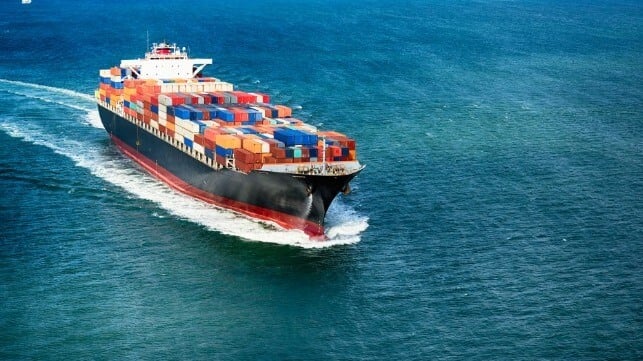Xeneta: May Was Highest Monthly Increase in Long-Term Freight Rates

The major ocean carriers have been highlighting for months the strength of long-term freight contracts as a key contributor to their strong performance. Many of the companies reported increasing their focus on long-term contracts leading analysts to watch as the latest round of renewals was completed. Many of the contacts typically start in May and run through to April, meaning the new contracts were coming into force over the past month.
The numbers for May 2022 are in and the long-term freight rates soared a staggering 150 percent year-over-year. May saw the highest ever monthly increase in long-term contracted ocean freight rates, according to new data from Xeneta, a market intelligence platform. They are reporting that the cost of locking in container shipments soared by 30.1 percent., according to the latest Xeneta Shipping Index Public Indices for the contract market. Calling the numbers “unprecedented” Xeneta reports long-term rates are now 150.6 percent up year-on-year with costs up 55 percent in 2022.
“This is a staggering development,” comments Xeneta CEO Patrik Berglund. “Just last month we were looking at an 11 percent rise and questioning how such continued gains were possible. Now we see a monthly increase of almost a third blowing the previous XSI records out of the water.”
According to Xeneta, the most dramatic development in May was seen in U.S. import costs, which jumped by 65.1 percent to stand 205.4 percent up year-on-year, as new long-term contracts came into force. European long-term rates rose by 11.3 percent on the import index (122 percent up year-on-year), while exports recorded their largest ever monthly jump of 27.6 percent, an impressive 138.3 percent year-over-year increase. Far East import and export indices both raced upwards as well, with the former rising by 17.4 percent and the latter soaring 35.4 percent, the largest ever monthly rise for this measure. Year on year, the benchmarks are up 57.1 percent and 174.8 percent.
while the lockdowns in China, allied to blanked sailings from the carriers to protect softening spot rates, have and may continue to, impact upon the supply chain,” said Berglund. Not as much cargo as anticipated has been moved over the last couple of months and, with the peak season approaching, that could cause added disruption.”
Berglund warns that it is impossible to forecast what is going to happen in the mid- to long-term. “Shippers are being bled dry, says Berglund noting that “the best advice we can offer is to try and stay as strategically limber as possible and follow market developments. He points to the continuing regulatory investigations into carrier practices and China’s zero COVID policy that create uncertainties as well as the ramifications of geopolitical upheaval that casts a shadow of uncertainty for shippers looking to tailor the best logistics solutions for long-term needs.
